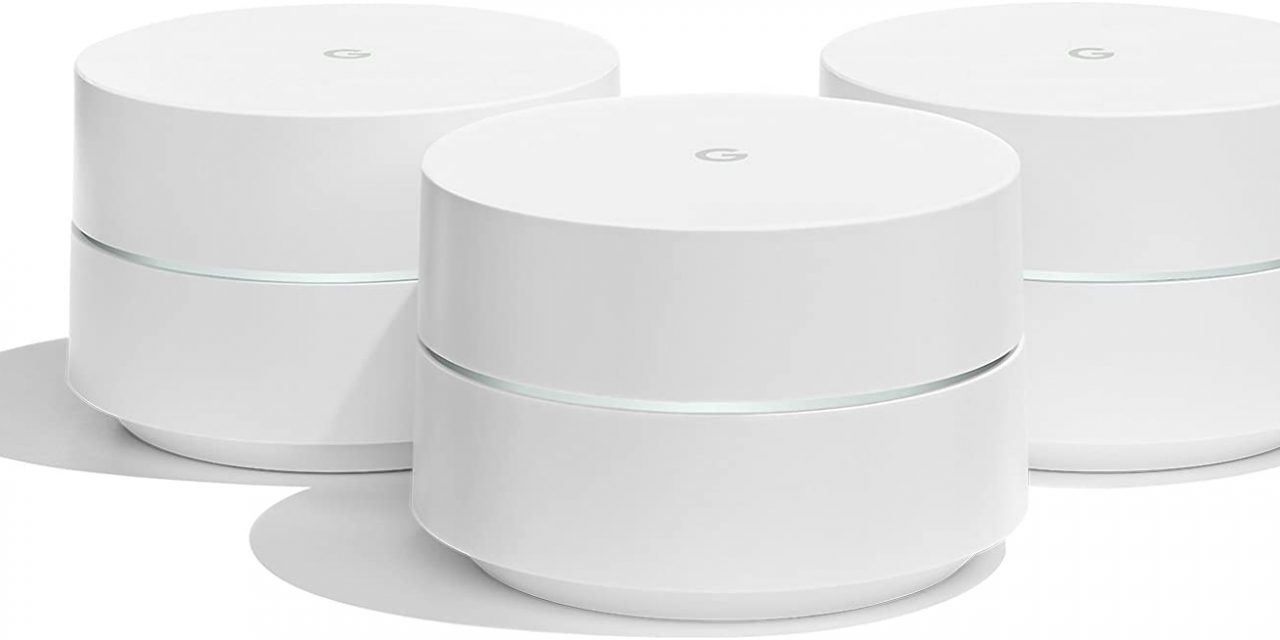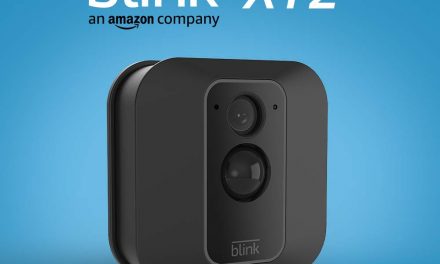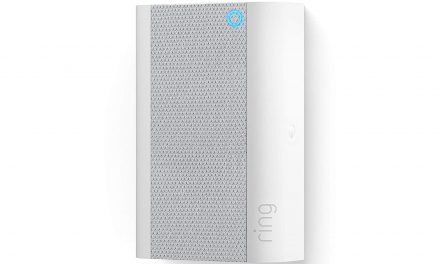The Google WiFi and the Ubiquiti AmpliFi HD are excellent smart routers. They are stylish routers that come with parent controls to protect young ones from accessing websites with inappropriate content, come with an easy to read LCD screen and allow you to create a guest network. The Google WiFi smart router comes with a dual 2.4/5 GHz band selection, a mobile application, and the most popular WiFi 5 technology while the Ubiquiti AmpliFi HD comes with a USB port that you can use to connect a network printer, a web browser and a powerful Qualcomm Atheros QCA 956X processor. Which smart router is better than the other? We will compare the two smart routers head to head and help you make a judgment as to which smart router is best for your home or office.
Alternatively, just skip to the Google WiFi or the Ubiquiti AmpliFi HD on Amazon.
Table of Contents
Quick Comparison Table Google WiFi vs. AmpliFi HD
| Google WiFi | Ubiquiti AmpliFi HD | |
|---|---|---|
| Image |  |  |
| Frequency Bands Supported | 2.4 / 5 GHz | 2.4 / 5 GHz |
| Encryption Algorithm | WPA2-PSK | WPA2-PSK AES/TKIP |
| Range | 1500 – 4500 sq. ft. depending on the number of routers present | 10 000 sq. ft. if it is in the mesh configuration |
| Processor | Quad Core 710 MHz | Qualcomm Atheros QCA956X processor |
| LCD Screen | No | Yes |
| MU-MIMO | Absent | Absent |
| WiFi technology | WiFi 5 (IEE 801.11 a/b/g/n/ac) | WiFi 5 (IEE 801.11 a/b/g/n/ac) |
| Subscription Packages | None | None |
| Wired Connectivity | 2 Gigabit WAN + LAN USB type C | Gigabit Ethernet (1) WAN, (4) LAN |
| USB Port | No | Yes – 1 |
| Parental Controls | Yes | Yes |
| Web Browser | Yes | Yes |
| Mobile App | Yes | Yes |
| Guest Network | Yes | Yes |
| Price | Check Price | Check Price |
Key similarities between the Google WiFi and the Ubiquiti AmpliFi HD:
- Dual Band
- Do not support MU-MIMO
- Use WiFi 5
- Parental controls
- Mobile app
Key differences between the Google WiFi and the AmpliFi HD:
- USB port
- Range
- Number of LAN ports
- LCD Screen
- Design
A Comprehensive Comparison between the Google WiFi and the AmpliFi HD
1. WiFi Bands
These are the frequency bands that a wireless device supports. In WiFi, there are 2 main frequency bands. These bands are the 2.4 GHz band as well as the 5 GHz band. As you know, the higher the frequency, the faster the speed and the slower the speed. This therefore means that the 5 GHz band offers faster performance but it does so with a compromise of the range. If speed is more important than the coverage range then 5 GHz will be a good band to use. The 2.4 GHz band is slower than the 5 GHz band but comes with a better range. This frequency spectrum has the disadvantage that many devices use it. These include Bluetooth devices, Zigbee devices, Microwaves as well as cordless phones. Both the Google WiFi and the Ubiquiti AmpliFi HD support these bands.
2. WiFi Technology
The WiFi technology used to be pretty confusing to any non-technical person. You would find routers having labels such as IEEE 802.11 a/b/g/n/ac. The WiFi alliance saw that this would bring great confusion to the consumers and decided to give better names to the WiFi technologies. The most popular wireless technology that is currently available is 802.11 ac (IEEE 802.11 a/b/g/n/ac). This is currently known as WiFi 5. Both the Google WiFi and the AmpliFi HD support this fast WiFi technology. This technology is usually adequate for the average consumer’s needs. It is important to note that most of the latest networking devices come with the ultra-fast Multiple User Multiple Input Multiple Output (MU-MIMO) feature which makes the performance unimaginably fast. Both the Google WiFi and the Ubiquiti AmpliFi HD do not come with this feature.
3. Mobile Application
Most devices that are shipped today come with a mobile application. This application is used for various things such as providing installation steps, for customization as well as for accessing additional features. Both the Google WiFi and the Ubiquiti AmpliFi HD come with a mobile application which is compatible with both the Android and the iOS mobile operating systems.
4. Installation
Both the Google WiFi and the Ubiquiti AmpliFi HD are easy to setup. You do not need to be a network technician to figure out how to install and setup these devices. All that you need to do is to download the mobile application and follow the steps provided to install the Google WiFi device. To setup the Ubiquiti AmpliFi HD, you simply need to use the touchscreen device and use its default setting. If you want to customize it further, just use the mobile application and make it suit your unique preferences. This process is so easy that you are almost guaranteed to have a trouble free installation process.
5. LCD Screen
The Google WiFi and the Ubiquiti AmpliFi HD come with a different user interface. In order for you to access much of the settings and interact with the Google WiFi device, you will need to use the mobile application. The Ubiquiti Amplifi HD, however, comes with a very beautiful LCD touch screen that you can use to enter commands into the device. This will be of great use especially in the installation and setup phase. The display gives you useful information at a glance such as the current date and time. In addition, the interface makes the device look quite modern and stylish.
6. Mesh points
Both the Google WiFi and the AmpliFi HD allow for you to create a mesh network. With the Google WiFi device, you can connect two mesh points to have a total of 3 devices. Each access point in the mesh network comes with 2 Gigabit Ethernet ports. The primary WiFi point comes with a WAN and a LAN port. The other access points have use the 2 Ethernet points as LAN ports. This ensures that you have a strong, steady signal. The Ubuiquity AmpliFi HD, however, comes with access points that do allow you to create a mesh network but do not have any Ethernet points. They act as hotspots. Ubuiquity claims that you can add an unlimited number of additional access points but the performance of the network may not be very good due to the lack of an Ethernet port on these additional access points.
7. Range
The Google WiFi and the Ubiquiti AmpliFi HD have different ranges. The Google WiFi router’s range can reach up to 4500 feet if you connect additional access points (2) to it. The Ubiquiti can get a much greater range when you connect it with two mesh/access points. It can get a range of up to 10 000 feet. This means that you will be able to get to all those hard to reach places in your home.
8. Additional features
The Google WiFi and the Ubiquiti AmpliFi HD have a few additional features in common. They support having parental controls. This means that if you have kids present at your house, or if your business allows kids to connect to it e.g. if you run a nursery school, you will need to restrict the websites that children can visit otherwise they will become very naughty adults. Both these devices allow you to restrict the websites that the users are able to visit.
If you have guests, you may not want them to have access to your entire home WiFi network. In order to avoid giving guests full access to your network, the Guest feature was introduced. Both the Google WiFi and the AmpliFi HD support this feature.
The Ubiquiti AmpliFi HD comes with an additional port. It has a USB port. The Google WiFi does not currently have a USB port. The only thing that we find queer about this port is that it is “reserved for future use.” This means that it is not of much use right now.
Why Do You Need a Smart Router?
1. Speed
The latest smart routers come with advanced WiFi technology. Such technologies include beam forming as well as the use of WiFi mesh networks. This allows for you to reach amazing speeds and this allows you to work a lot quicker than you would if you used the old routers that are still widely available. Both the Google WiFi and the Ubiquiti AmpliFi HD are very fast devices.
2. Easy to Use
The traditional routers needed you to be a network technician, a network technician’s friend or a network engineer. They used cryptic language that the average consumer would find quite difficult to even look at. The latest smart routers are made for the average Joe. In most cases, you will have a mobile application which guides you through the installation process, and it makes it very easy to use. Both the Google WiFi and the AmpliFi HD are very easy to use.
3. Reliability
Smart routers come with intelligent traffic monitoring. In most cases, the routers come with simultaneous dual band WiFi. This means that the router will support the use of 2 different frequencies i.e. the 2.4 GHz and the 5 GHz bands at the same time. This allows for the router to allow high speed, high bandwidth traffic to use the faster band and low speed traffic to use the slower band.
Our Pick
We found the Google WiFi router to be highly attractive – irresistible in fact! This is because it comes with a decent design that makes it unobtrusive, it has access points that have gigabit Ethernet points and it is very easy to setup and install. We found the Ubiquiti to be awesome but we could not get over the fact that it does not come with gigabit ports on its access points.
Factors to consider When Choosing between the Google WiFi and the AmpliFi HD
1. Range
This greatly depends on where you want to use the router. If you would want to use the router in a large house, then you would want a router that gives the best range possible. The Ubiquiti is able to give a range of up to 10 000 feet. This is ideal for those who need the range to be as long as possible. If you are an average user, you could consider using the Google WiFi as it comes with a more realistic range for the average user – up to 4500 sq. ft. if you use 3 Google WiFi devices.
2. Latency
If you are a gamer, then you probably understand what this is. Latency is basically the time taken for a signal to be sent from a computer and return to the computer. If you are playing a game, when you press a button, you want the character in the online game you are playing to immediately respond to that command. In order to have the least amount of latency, it is best to use a wired network or a network with several access points that are directly connected to the main device through a wired interface e.g. through an Ethernet cable. The Ubiquiti’s access points do not have any ports. The Google WiFi’s access points have ports. If you are a gamer, then go with Google.
3. Design
Computer equipment used to be very big and very ugly. The very first home computers created looked like very ugly pieces of metal with a big bulgy screen. The peripherals as well as other computer equipment was no different. It was made by engineers, with other engineers for use by engineers. Nowadays, the computer equipment now looks good. The Google WiFi and the AmpliFi HD are both good looking but we have got to applaud the Ubiquiti design team for going the extra mile. Their device is eye candy. If you care about beauty or if you just want to have something to show off with then Ubiquiti is for you.
4. Parental Controls
When choosing a router to buy this is the most important thing to consider. Even if you do not intend to use the device in a home network. You need to be able to filter out all of the traffic that is unsafe for young children to make sure that they do not get stuck with images they cannot forget. Both the Google WiFi and the Ubiquiti AmpliFi HD come with this feature, and you can choose which between the two offers more relevant parental controls to you.
5. Guest Portal
You are going to have guests. You do not want them to get full access to your WiFi network. This means that you are going to need a feature to ensure that this does not happen. It is best to go for routers that have guest portals. Both the Google WiFi and the Ubiquiti AmpliFi HD have this feature. You can choose which between the two offers the best type of guest portal.
Google WiFi vs. Ubiquiti AmpliFi HD FAQs
Can I Create a Mesh Network?
Yes, yes and yes. These devices were made for mesh networks.
Which WiFi Technology Do They Use?
They use WiFi 5. It is the most common WiFi technology present in the market right now.
Can I add Additional WiFi Points?
Yes you can.
Are they Easy to Setup?
Yes they are. Anyone can install and setup these devices.
Will they Work with My Router?
Yes. They are routers themselves though.
Conclusion
In this article, we explored the similarities and differences present between the Google WiFi and the Ubiquiti AmpliFi HD routers. We declared the winner between the two to be the Google WiFi router. This is because of its decent range, rock solid performance as well as the presence of Gigabit Ethernet ports.
We included a comprehensive list of features that you may need to consider when you are choosing which router to buy. The list must be able to guide you to choose the best device to choose your unique needs.
Check the best router, the Google WiFi on Amazon.






